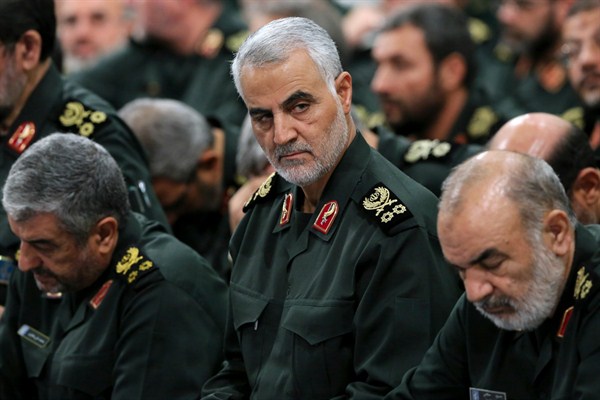In the high-stakes game between Tehran and Washington, it is often hard to tell who is really bluffing. This week, President Donald Trump threatened that a war would be “the official end of Iran,” responding in part to reports that Qassem Soleimani, the head of the Islamic Revolutionary Guard Corps’ elite Quds Force, had urged leaders of Iranian-backed militias across the Middle East to “prepare for proxy war.” For those counting cards, however, Iran may already have tipped its hand.
The recent return to Iran of a wave of fighters from Liwa Fatemiyoun, an Iranian-backed militia made up of ethnic Afghan Hazaras that has been fighting in Syria since the civil war’s early days, suggests Tehran may be anticipating a different kind of proxy war altogether. With deep roots in Afghanistan’s small minority Shiite community, the Afghan Hazaras that make up the bulk of Liwa Fatemiyoun’s forces have historically punched well above their weight. While much of the focus on the fallout from Syria’s war has been on the risks posed by fighters from the Islamic State returning home, the implications of thousands of Iranian proxies leaving the Syrian front for their home turf has been overlooked.
Estimates vary as to the number of Liwa Fatemiyoun fighters who are in Syria and have fought to defend President Bashar al-Assad’s regime on behalf of Tehran. One Afghan researcher, Ahmad Shuja Jamal, suggested in a report for the U.S. Institute of Peace that up to 50,000 may have taken up arms there. Many signed up willingly, attracted by high-paying salaries and the promise of citizenship or residency status in Iran upon their return from Syria. Some were pressed into service after falling on hard economic times that ended in scrapes with the law. Hundreds, if not thousands, have reportedly returned to Iran and Afghanistan over the past few years. Whether these fighters truly pose a threat to security in the region or to U.S. interests remains to be seen. But their trend lines bear watching as talk of proxy warfare between the U.S. and Iran heats up.

